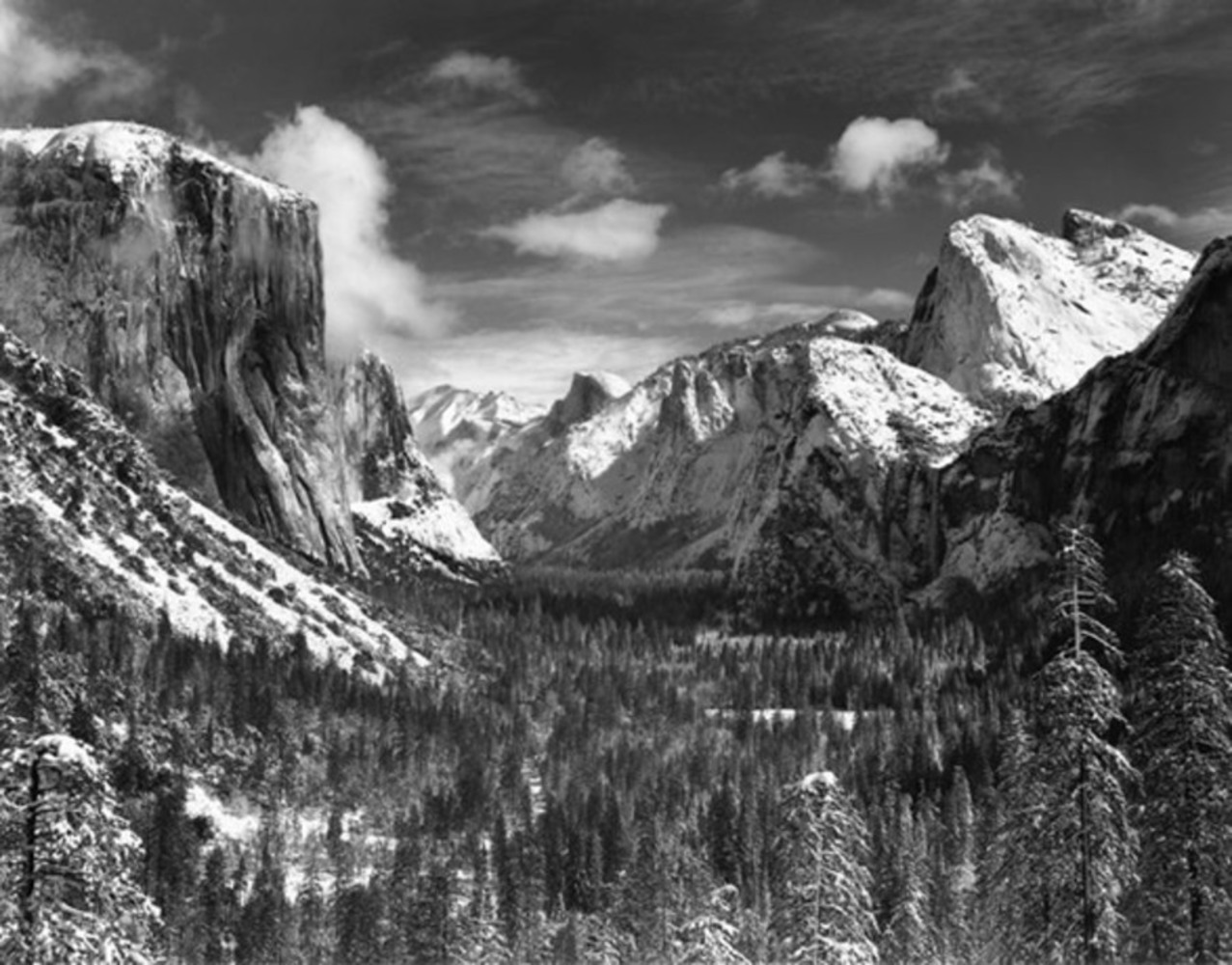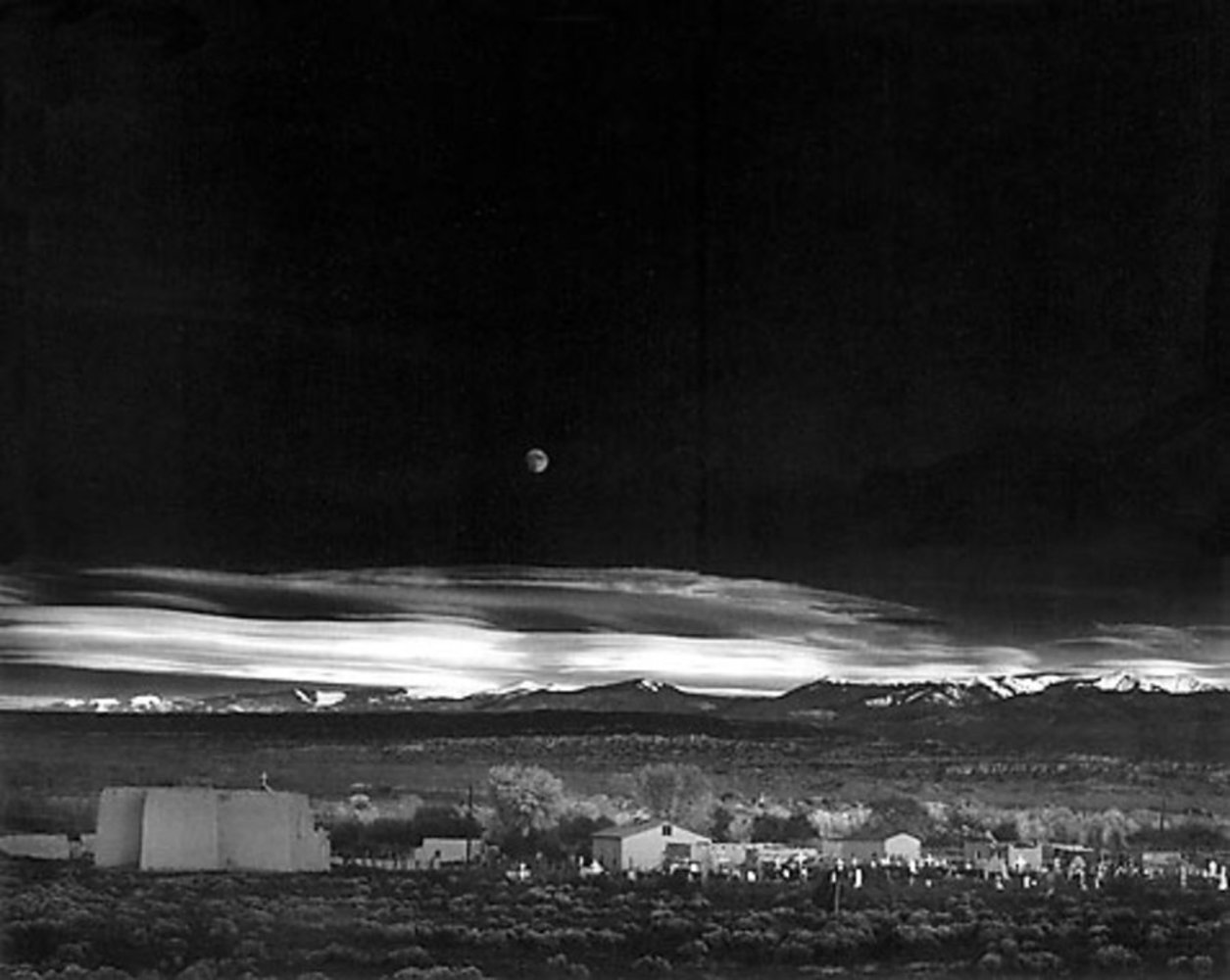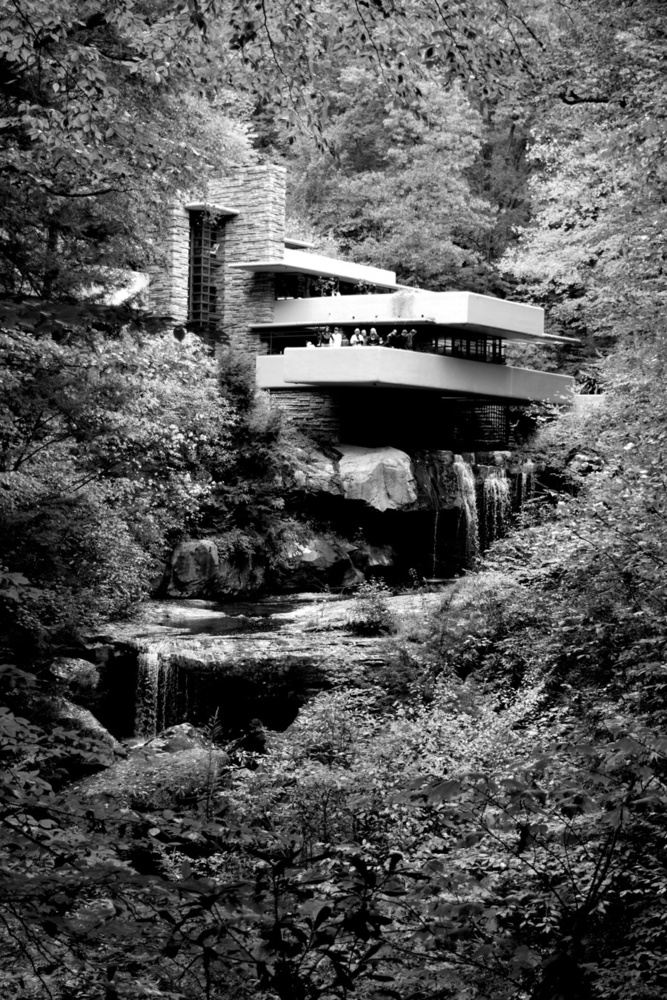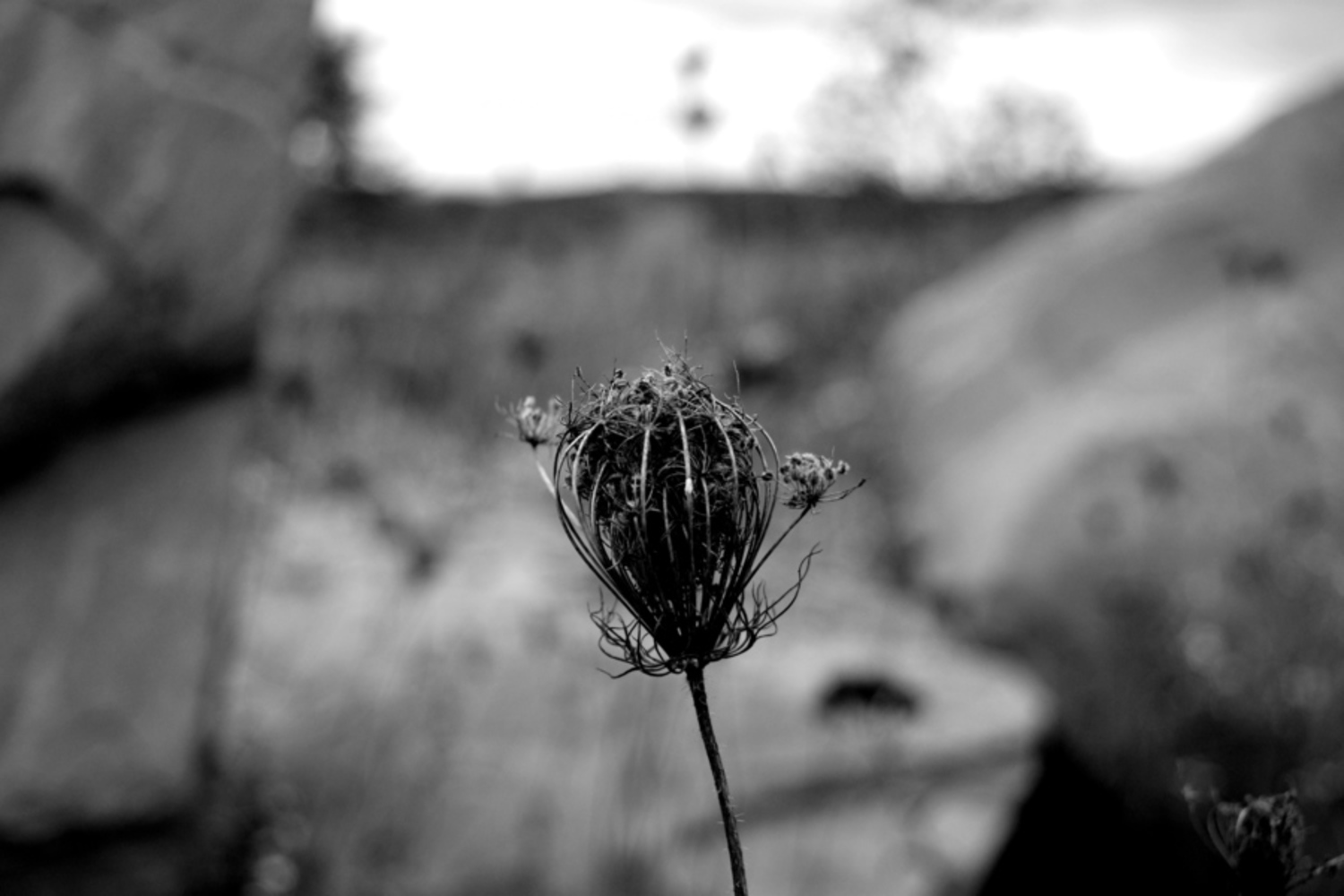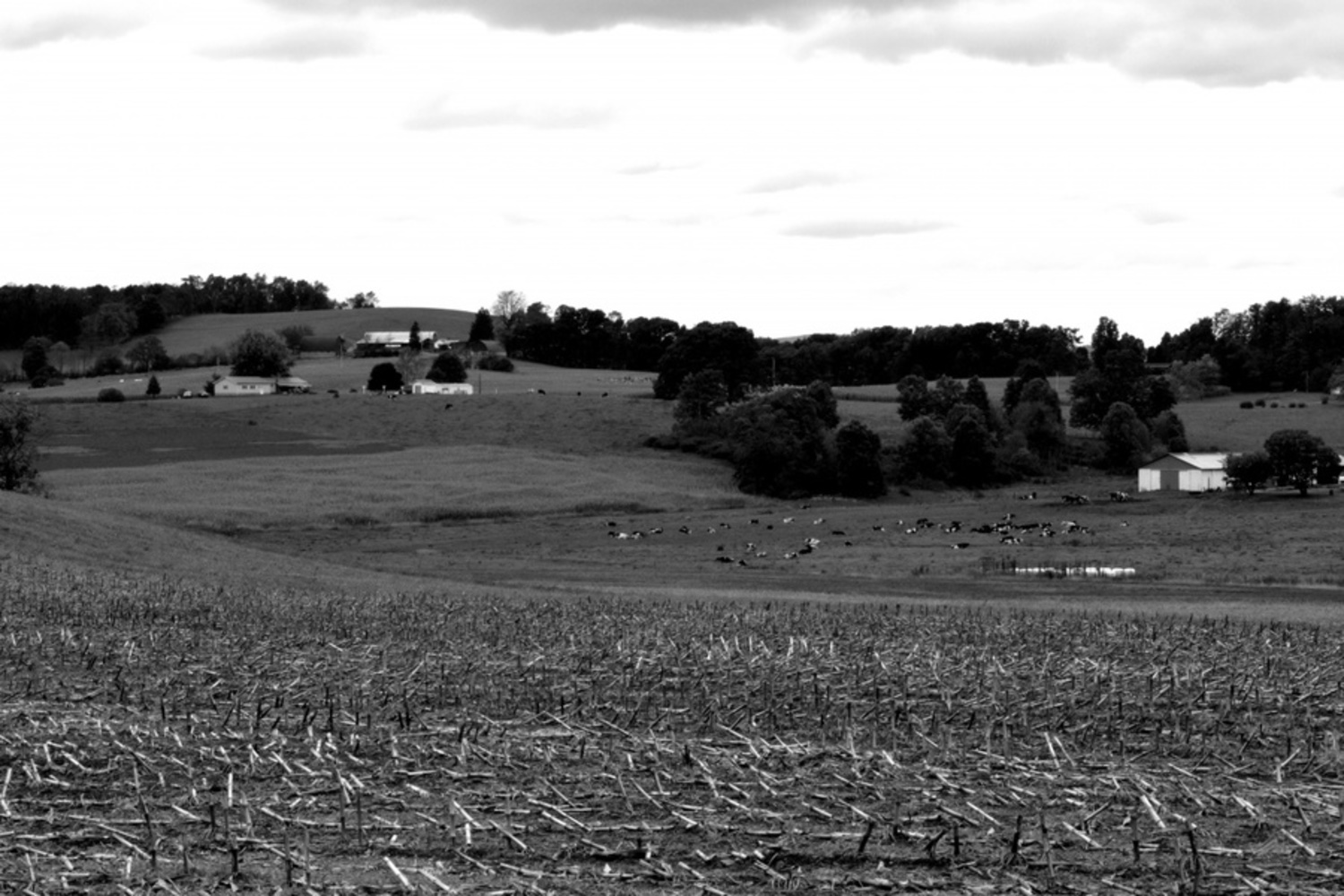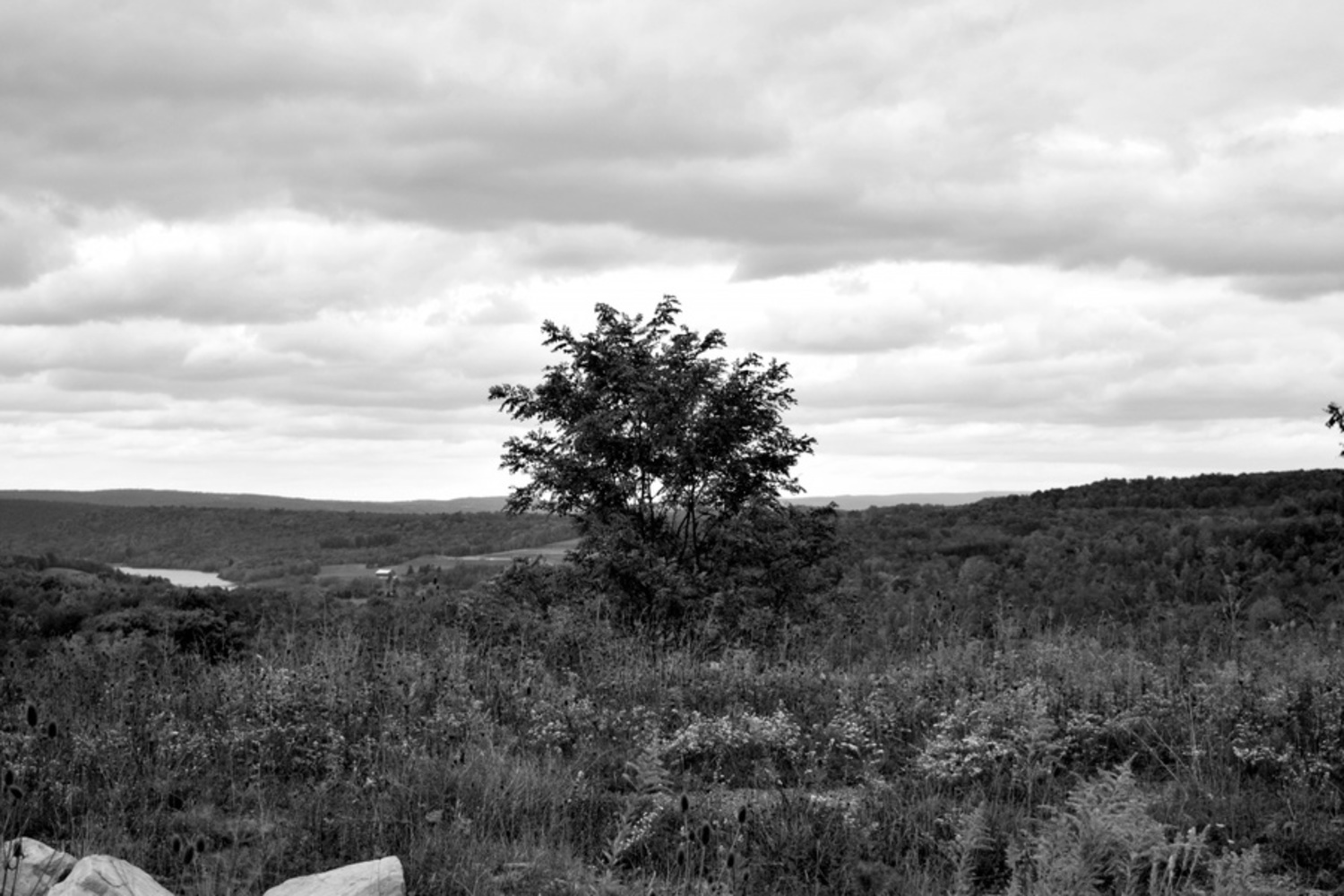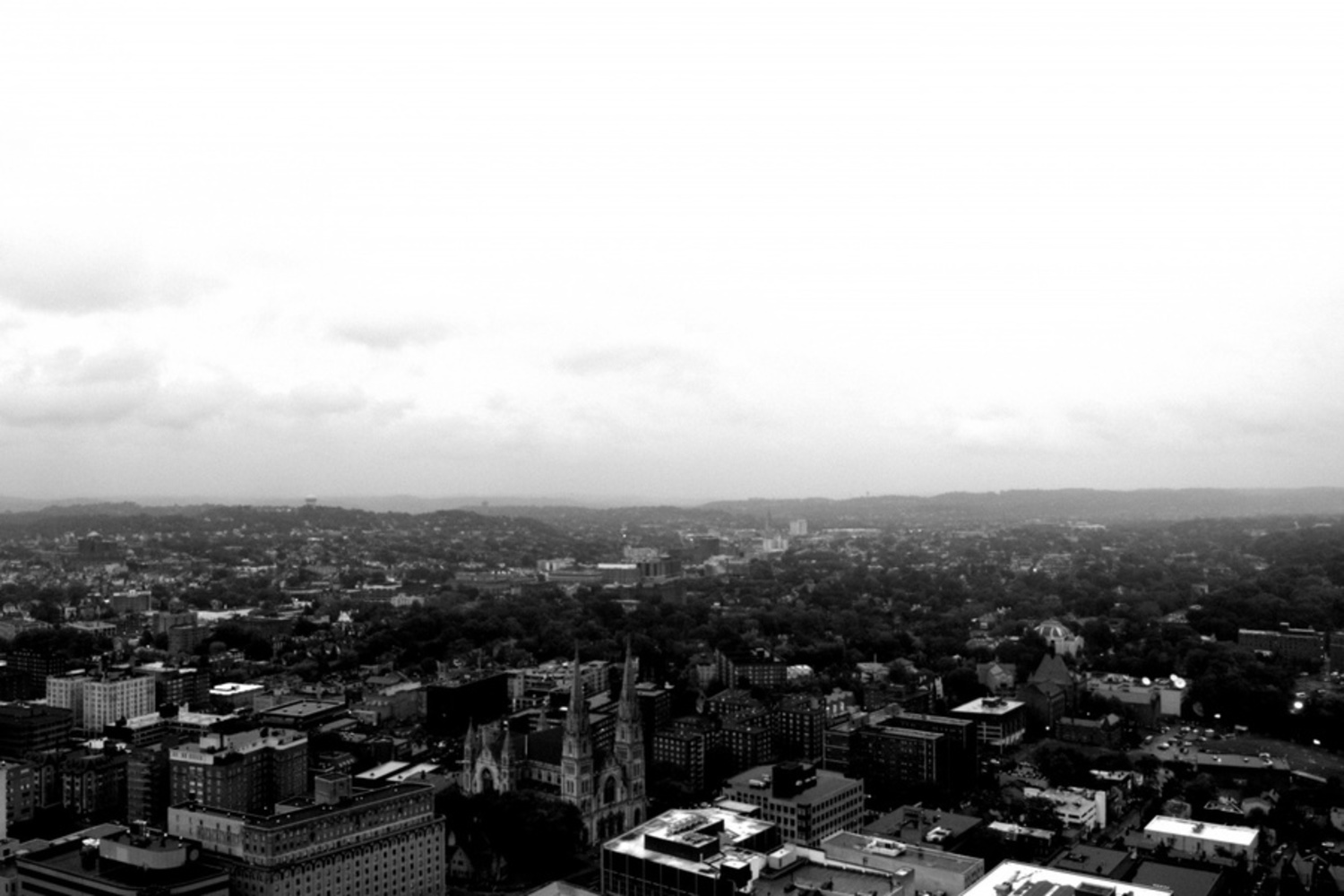Ansel Adams is an American photographer, born in San Fransisco, California. Adams specifically specialized in photographing American landscape in black and white. Adams was unique in that he developed his own special process for photo taking and development, called "Zone System".
Outcome
(Above: Falling Ansel)
I thought falling water was a beautiful emulation of the last image in my samples of Adams' photographs because it was a structure that blended into nature, yet had a color contrast that made it stand out.
What made Adams' style very difficult to replicate was his multiple-exposure, zone system. To work with this in the digital world, I stacked many layers of the photo atop one another, and then I desaturized, contrasted, and negated some of them, selecting areas to make more transparent so those sections would stand out. As seen below, I practiced this with an image taken up close with low aperture, trying to flesh out my use of the zone system to accentuate the many colors of the thistle.
(Above: Private Property Plant and Equipment)
I found myself trespassing on a lot of farm property in attempts to grab some shot of open landscape. With this particular thistle, while not in a wide landscape shot, I had still ventured far into wheat fields in my prius. It was quite conspicuous and invigorating.
(Above: Moonrise Masked)
I went to the top of the cathedral of learning at 30 minutes past moon rise, yet to no avail, as it was masked by the fog. Once again, despite my layering, my long exposures with high aperture kept the clouds from showing rough edges, and made them a uniform haze. I used a windowsill to keep the camera from shaking, this allowed for more fineness and focus in all parts of the photo.
Although this may sound bad (though I don't think it is), this has encouraged me to capture more of the rural Pennsylvanian life. I actually had to delete one of my favorite photos of a decrepit house situated next to an exploded rock-face that was cleared for an interstate: this was because the owner of the house came out and threatened to break the camera unless I deleted the photo immediately.
It was fun: getting off campus for a while.
You can upload files of up to 20MB using this form.
